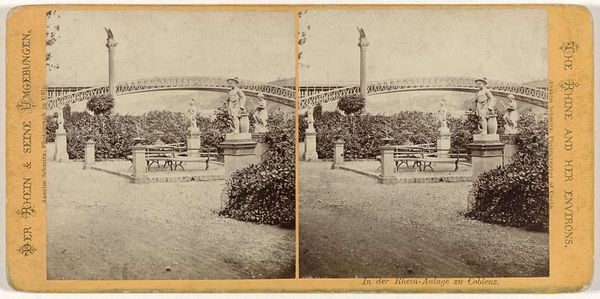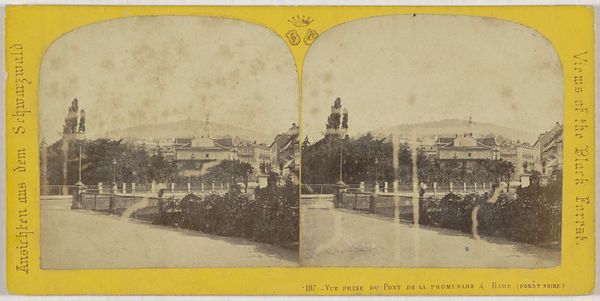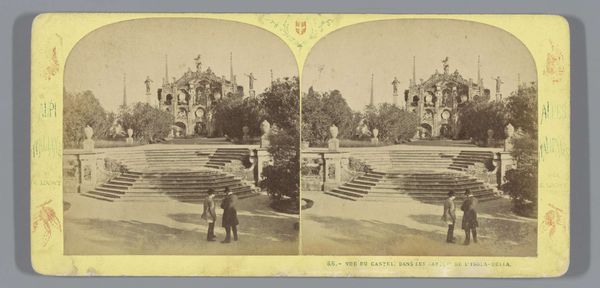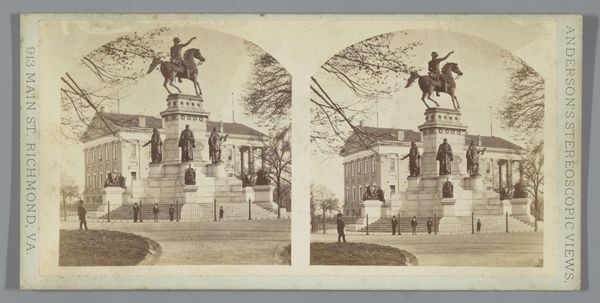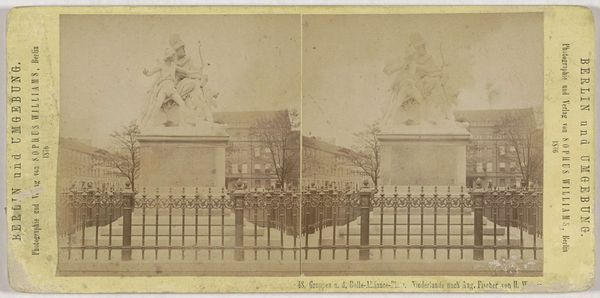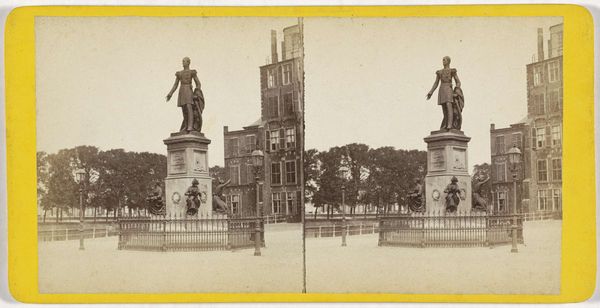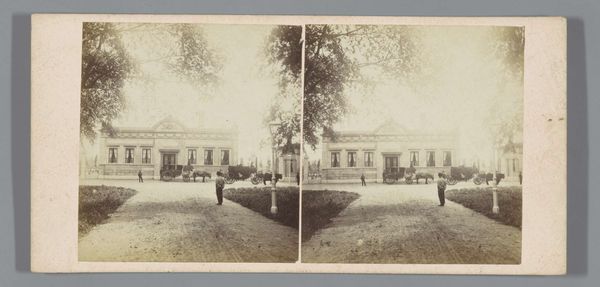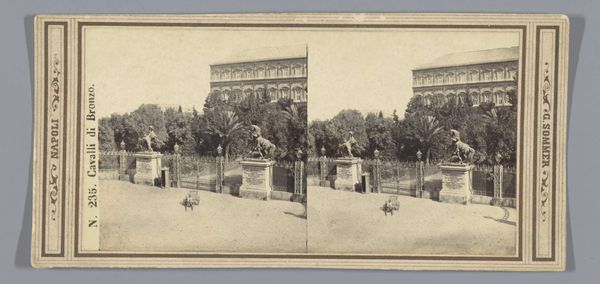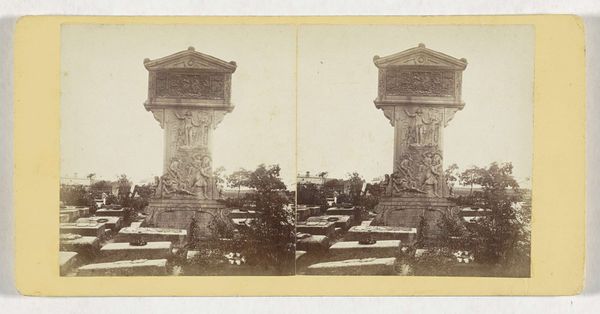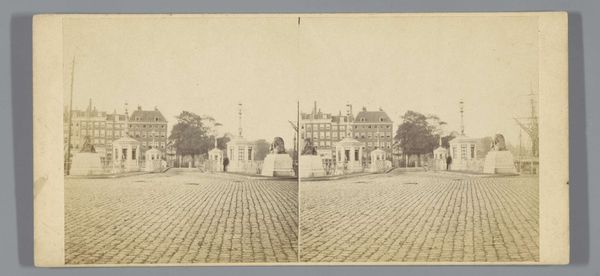
daguerreotype, photography
#
landscape
#
daguerreotype
#
photography
#
cityscape
Dimensions: height 87 mm, width 178 mm
Copyright: Rijks Museum: Open Domain
Curator: Looking at this, I'm struck by a feeling of muted grandeur. It’s as if the hustle and bustle have been temporarily silenced, focusing all attention on the architecture and central sculpture. Editor: Precisely. What you're seeing is a daguerreotype, a photograph really, of "Tritonfontein op de Maxplatz, Neurenberg," dating from between 1868 and 1888 by Johann Friedrich Stiehm. Curator: The central fountain statue… that figure seems to have arms raised. It's difficult to decipher the exact symbolism, but it gives off an air of triumph or perhaps welcome. A gesture of open arms as an embodiment of the city. Editor: Yes, this likely echoes classical depictions of Triton, who can be associated with the sea and power. Public fountains often referenced Greco-Roman antiquity to reflect on political values of order, culture and a glorious past. Here the symbolic value might have less to do with ocean narratives, and more about the importance of the city’s access to a water source for both utilitarian and aesthetic purposes. Curator: The presence of the trees feels almost ceremonial. Their rigid formation suggests cultivation, imposed order even in nature. They’re arranged in a grid. It all points to an intent of controlled presentation. How much do you think the photographic process informs this composition? Did the long exposure times push the city to build more static environments? Editor: The medium certainly dictated the composition. The long exposure would smooth out and minimize human movement. This lends an aura of tranquility to public life. In these earlier cityscape photographs, you're more likely to see intentional staging to illustrate societal order and a self-conscious intent to highlight progress during an age of modernization. But notice the placement of the fountain—a perfect framing device, enhancing perspective in its formal garden setting. Curator: The photograph really captures a sense of societal intent, how cities project images of themselves for public consumption and political clout. Editor: And it is through symbols like these that we can reconstruct how civic power has been, and continues to be, represented across history.
Comments
No comments
Be the first to comment and join the conversation on the ultimate creative platform.

